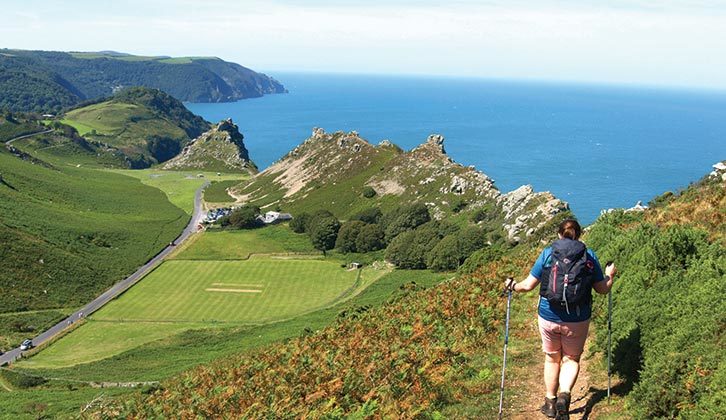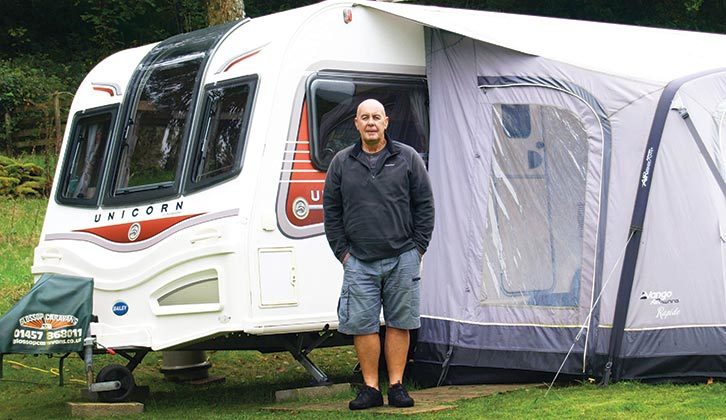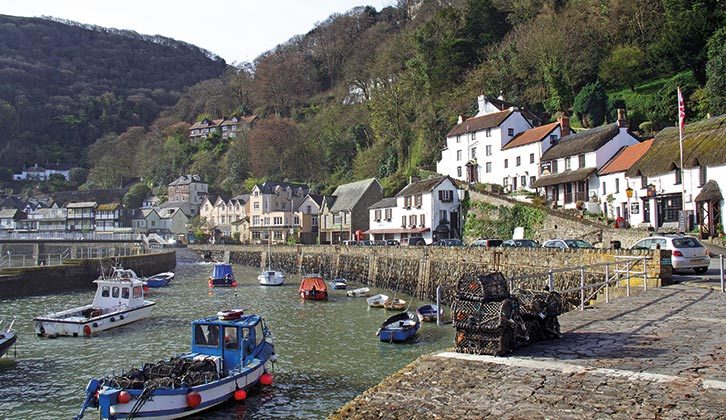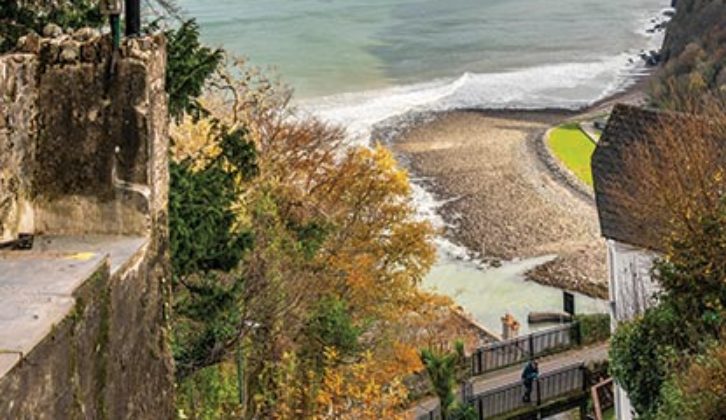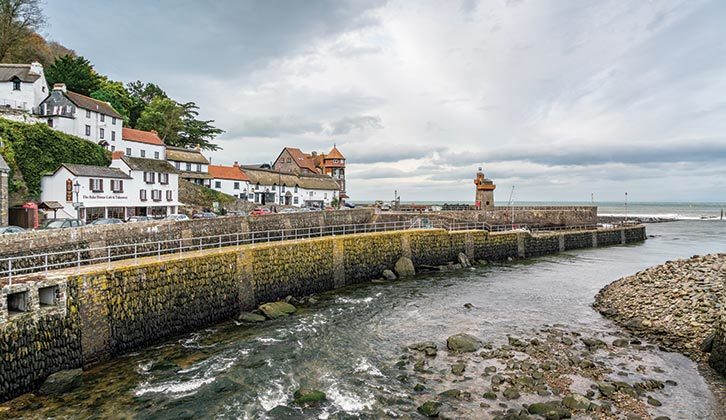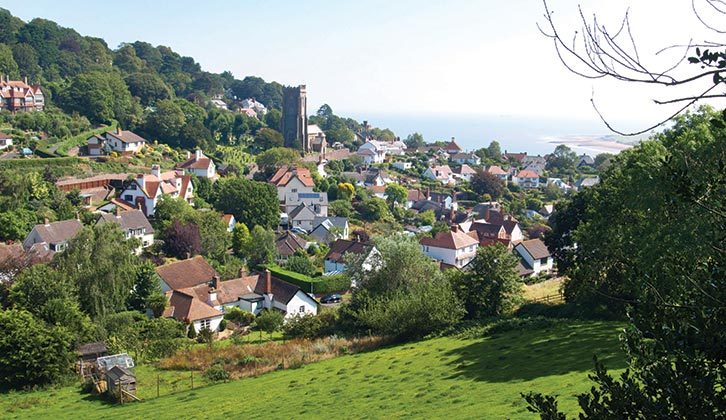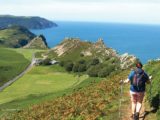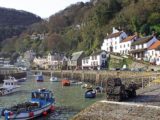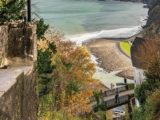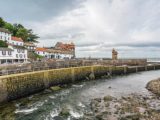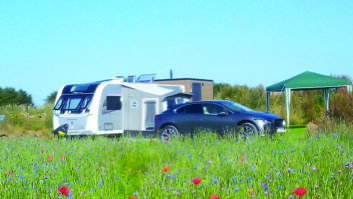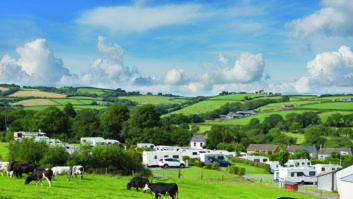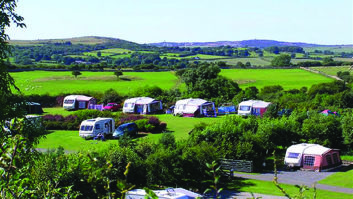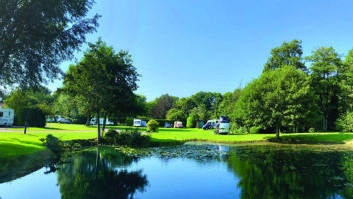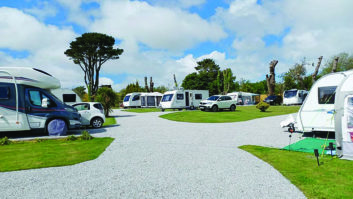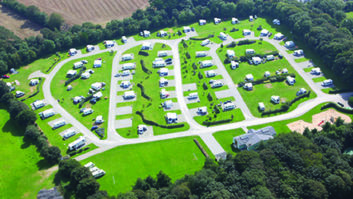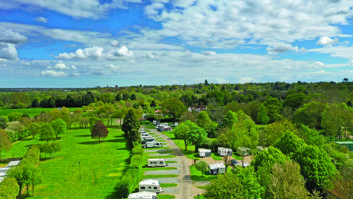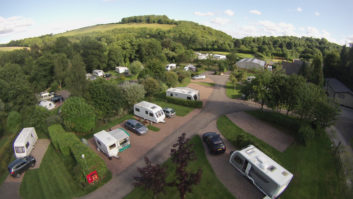Exmoor is the smaller of Devon’s two National Parks, and I first towed a caravan there when my daughter was just six months old. We stayed near Combe Martin, at the superb Stowford Farm Meadows campsite, and enjoyed a magical fortnight, which we remember with great fondness.
Danielle is 24 now and we are still taking regular trips to Exmoor – although she rarely comes with us these days!
Even though it can be a five-hour trip from our Cheshire home if the traffic is bad, it’s such a lovely area for outdoor enthusiasts to enjoy that we don’t mind.
It’s mostly motorway for us – we live close to J18 of the M6 so it’s a simple matter to follow it to Birmingham, then take the M5 to Taunton or Tiverton, before heading to the areas of the moor that most interest us.
Rocky ramblings
We are very keen hikers, and the rolling moorland of Exmoor offers visitors endless opportunities to don walking boots and head off for a day in the outdoors.
Walkers coming to Exmoor can make routes they follow as easy or as difficult as they like, and this fine National Park encompasses both pretty moorland and a long rugged stretch of North Devon coastline, so there is plenty to enjoy.
It’s not just hikers who are catered for here – mountain bikers, birdwatchers and those who love dramatic scenery will all find themselves returning to Exmoor.
As a location, Exmoor is not as rugged as Dartmoor National Park, further south, and it is busier, but there are remote spots to be visited and it can be very challenging when the mist rolls in off the sea.
Our most recent visit to Exmoor saw us snatching a few days in August and heading south. The weather was settled and the forecast was good, and we hadn’t been to Exmoor for well over a year. We were missing the place! We decided to stay at Lynton Camping and Caravanning Club Site – we’d not used it before and hadn’t pitched in the north part of the National Park for some years.
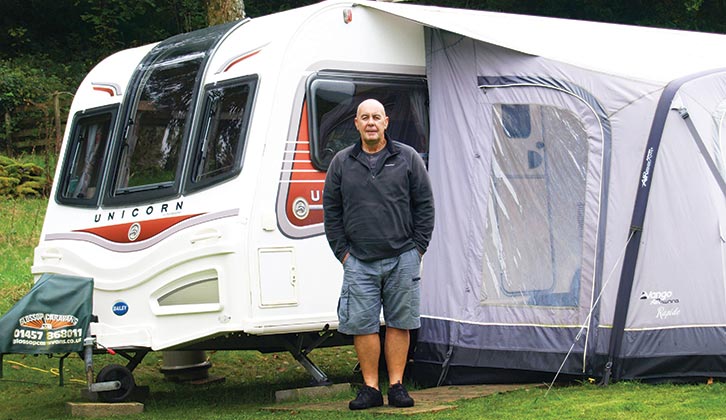
We had a bit of a ‘down memory lane’ visit planned, with trips to some favourite destinations and one or two new ones thrown in for good measure.
Lynton Camping and Caravanning Club Site is located down tight back lanes in a hillside setting, with sea views from many of the pitches. It’s a laidback sort of site, and being August it was fairly busy.
The traffic had been bad on the way down and once we had settled in, we chilled out with a bottle of wine as we enjoyed the sunshine and the scenery.
Our first destination the next day was the spectacular (and very famous) Valley of Rocks, which is located within easy walking distance almost directly below the site, although not in view from it.
A narrow lane (mostly unsuitable for traffic) rises from the site entrance to drop steeply to the pretty village of Lynton, with its numerous cafés and famous cliff railway, which links it with Lynmouth, over 850ft below. Opened in 1890, the railway saves you a long, steep walk down to the sea with its water-operated funicular line, where one car descends as the other ascends.
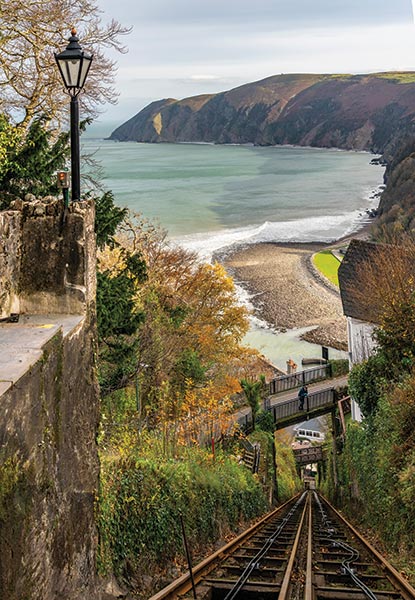
Of the two villages, Lynmouth was the original settlement and when space ran out, the builders simply moved up the hill and began to develop Lynton.
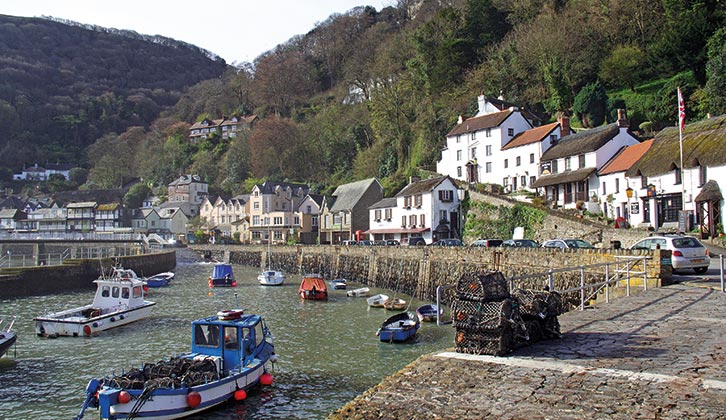
We had plans to see Lynmouth later, so we left Lynton on the signed path for the Valley of Rocks and headed along the side of Hollerday Hill, to descend in spectacular style to this awesome place.
The Valley of Rocks is a dramatic U-shaped valley running parallel to the coast. It is well known for its unusual rock formations and caves, and the feral goats that often appear in the most precarious situations on narrow ledges along the jagged cliffs.
The valley was visited by William Wordsworth and Samuel Taylor Coleridge in 1797, and they based their (unfinished) prose composition, The Wanderings of Cain, there. Many decades later, RD Blackmore set part of his classic 1869 Exmoor novel, Lorna Doone, in the valley.
We decided to stop for coffee and a snack at Mother Meldrum’s Tea Gardens, which is in the heart of this magical place. Then, suitably refreshed, we continued out of the valley to reach lovely Lee Abbey, now a Christian retreat, hotel and conference centre. From here, a steep but wonderful path took us through a coniferous forest and up the hillside beyond to Six Acre Cross, next to Lynton C&CC Site.
After a brief rest back at the caravan, we headed off in the car to visit Lynmouth. A short drive saw us descending the steep and twisty lanes – not for the faint-hearted motorist. It was a while since we had last been to Lynmouth, but little had changed.
We parked in one of the car parks and went for a pleasant walk along the seafront. Lynmouth is very popular with tourists, but even on a crowded day, it’s a lovely place.
However, this wasn’t always the case. On 15-16 August 1952, a massive storm broke over south-west England, dropping nine inches of rain on waterlogged Exmoor. The heavy floodwater, loaded with debris, cascaded down the northern slopes of the moor and converged on Lynmouth.
A huge wave carried the debris down the River Lyn and through the village. The river soon became blocked and the town flooded. Over 100 buildings and 28 bridges were destroyed or damaged, and 38 cars were washed out to sea. Tragically, 34 people died and 420 were made homeless.

Lynmouth was eventually rebuilt and the river diverted around the village. These days there is little to remind visitors of the disaster and a trip here is recommended, even if the drive in can be a bit hair-raising.
Top of the world
The forecast for the next day was good and we breakfasted early, before heading out in the car on a delightful sunny morning with clear skies and a rising temperature.
Our destination was Dunkery Beacon, which at 1705ft/519m is the highest point on Exmoor. Again, it had been a few years since we last walked to its summit and we were looking forward to a day out on the moor in the sunshine.
We drove south from Lynton and Lynmouth on the spectacular moorland road that is the B3223, across Brendon Common and into the heart of the moor. You get a real appreciation of what Exmoor is all about as you travel this road and it’s well worth stopping at one of the pull-in areas or car parks to soak up the views.
During August and September, the bright heather-covered moors stretch away as far as the eye can see in a blaze of purple. Backed by a blue sky, the scenery gives
you some spectacular photographs.
We probably lingered for longer than we should have on the drive to Dunkery Beacon and by the time we reached the pretty village of Simonsbath, the day had really begun to heat up.
From Simonsbath, we followed the B3224 through lovely Exford, leaving it at Blagdon Cross to take a narrow lane north-west to reach our parking area at Dunkery Bridge.
There are three car parks for visitors climbing to Dunkery Beacon, with the one on Dunkery Hill giving you the shortest ascent to the top and the one at Webber’s Post providing the longest.
Dunkery Bridge suited us on such a hot day, and we quickly filled our rucksacks and donned our boots. Sunscreen and plenty of water were the order of the day, and we decided to avoid the crowds heading up the main path from the car park to the summit, by taking an alternative track north-west to climb to Great Rowbarrow.
Dunkery Beacon, owned by the National Trust, has a chain of summits capped with Bronze Age burial mounds, set in remote and spectacular locations. We lunched in the sunshine at Great Rowbarrow and headed east on a good track towards the unmistakable summit of Dunkery Beacon. It’s always busy at the top, because you get amazing views of North Devon, Somerset, the Bristol Channel and South Wales.
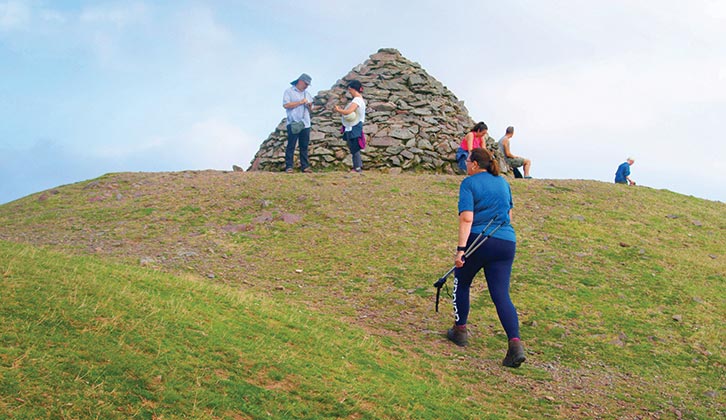
The summit has a large cairn, where people pose for photographs and sit to eat their butties! There was no way to avoid the crowds on the descent, but our path south soon brought us to the truck.
Back at the site, it was too hot to cook and we idled on loungers outside the van and soon decided to eat out. We had heard a lot about the Fox & Goose at nearby Parracombe, so we booked a table there. Parracombe is deep in the Heddon Valley and a lovely place to have a meal. The varied menu at the Fox & Goose is displayed on chalkboards in the dining room and we enjoyed a superb meal before heading back for an early night.
The forecast was good for the following day and we wanted to make the most of the excellent weather.
Seaside tourist town
It had been our intention to spend our final day at picturesque Ilfracombe and relive memories we had made there over the years. However, we decided on a whim to follow the A39 along the north coast of Exmoor and spend time in Minehead.
This is a town we have passed by many times on the road, but never visited, so we decided to put matters right and take a look. Minehead is an ever-popular seaside resort and famed for its imposing North Hill, which is the starting point of the 630-mile South West Coast Path, and its large Butlin’s Holiday Camp.
Our plans were flexible, but we decided to park the car near the harbour and explore North Hill on foot, before spending some time on the seafront.
From the harbour car park, we climbed through Culver Cliff Wood to wend our way to the upper slopes of North Hill, before continuing high above the sea to reach Hill Road, which runs along the hill’s higher reaches and gives access to the car parks there. Our return to Minehead was down tracks and through pretty parts of the town, to reach the harbour again.
The sun was shining off a sparkling sea and we finished the day with coffee and cake at Echo Beach Café – a lovely way to end a stunning visit.
We took a brief detour on the way back to Lynton, to visit the lovely village of Dunster. Thought to be the most intact medieval village in the UK, it is well worth making the time to explore.
Happy memories
Despite only having a short break, we still packed in a lot of activity and spent many hours sauntering along ‘memory lane’ and reliving our past experiences on Exmoor.
To be fair, we only scratched the surface of what’s on offer in this beautiful part of the world. We’ll go back again – after all, we’ve been doing so for over two decades now!
Are you thinking of trying out a similar trip? Take a look at our guide to the best UK road trips to plan where you want to go next.
Where we stayed
Lynton Camping and Caravanning Club Site
Address Caffyns Cross, Lynton, Devon EX35 6JS, 01598 752 379
- Open: Late March to late September
- Charges (pitch+2+hook-up): £14.60-£24.80
You can also get more great campsite ideas in our round-up of the best caravan parks in the UK.
Trip planner
When to go
August and September are especially good, although high summer can be very busy here. Any time from mid-spring to mid-autumn is excellent.
Way to go
Lynton Camping and Caravanning Club Site has to be approached carefully when towing. Don’t use the A39 from Minehead or come via Lynton or Lynmouth; instead approach the site via Blackmoor Gate. Avoid using sat nav. From M5 J27, take the A361 past Tiverton and continue on to the A399 to Blackmoor Gate. The A39 can then be followed towards Lynton; the site is signposted left at Caffyns Cross.
Find out more
Our outfit
We towed our 2016 Bailey Unicorn Cartagena with our VW Amrok 3.0-litre V6.
If you’ve enjoyed reading this article, why not get the latest news, reviews and features delivered direct to your door or inbox every month. Take advantage of our brilliant Practical Caravan magazine SUBSCRIBERS’ OFFER and SIGN UP TO OUR NEWSLETTER for regular weekly updates on all things caravan related.
